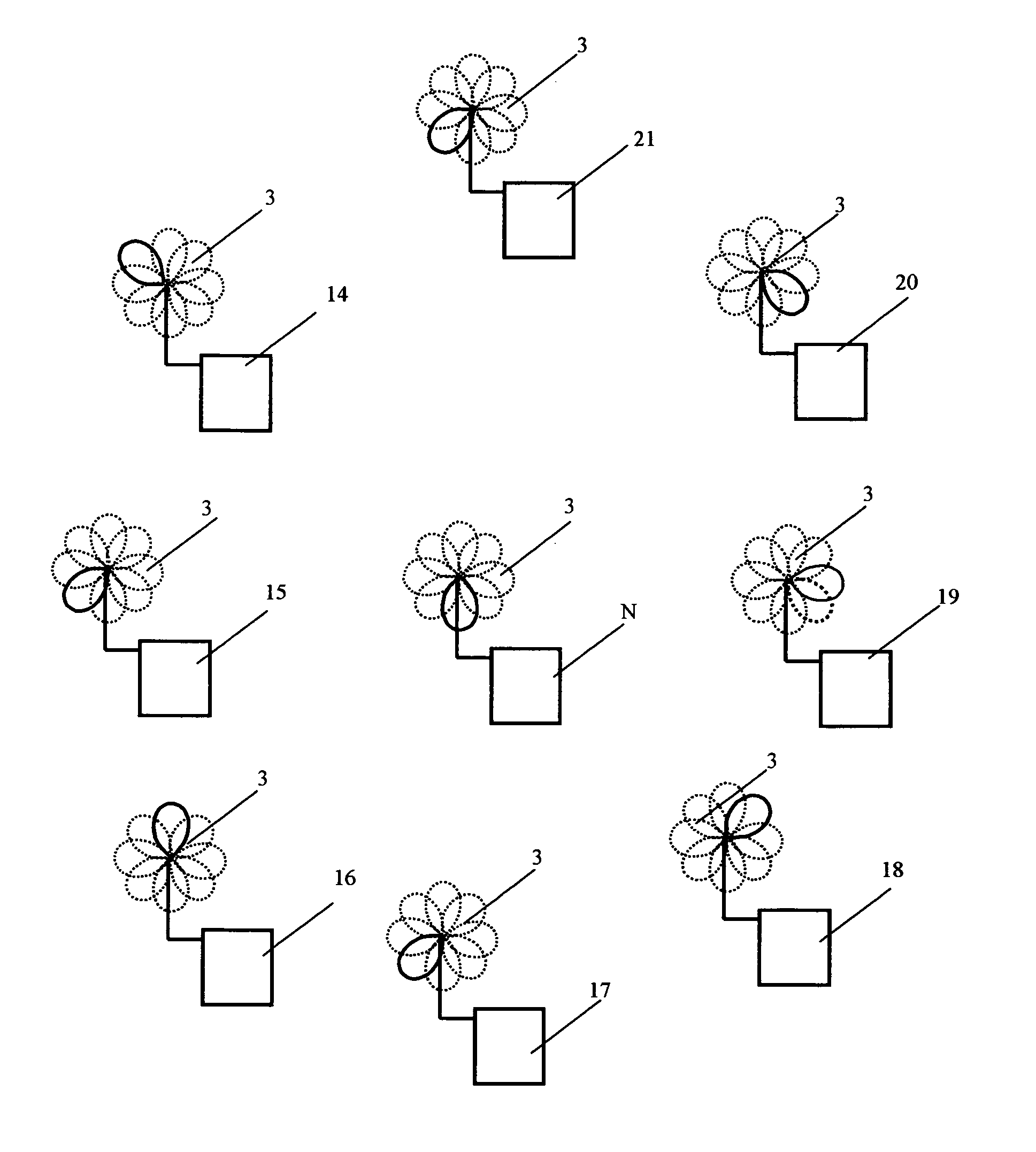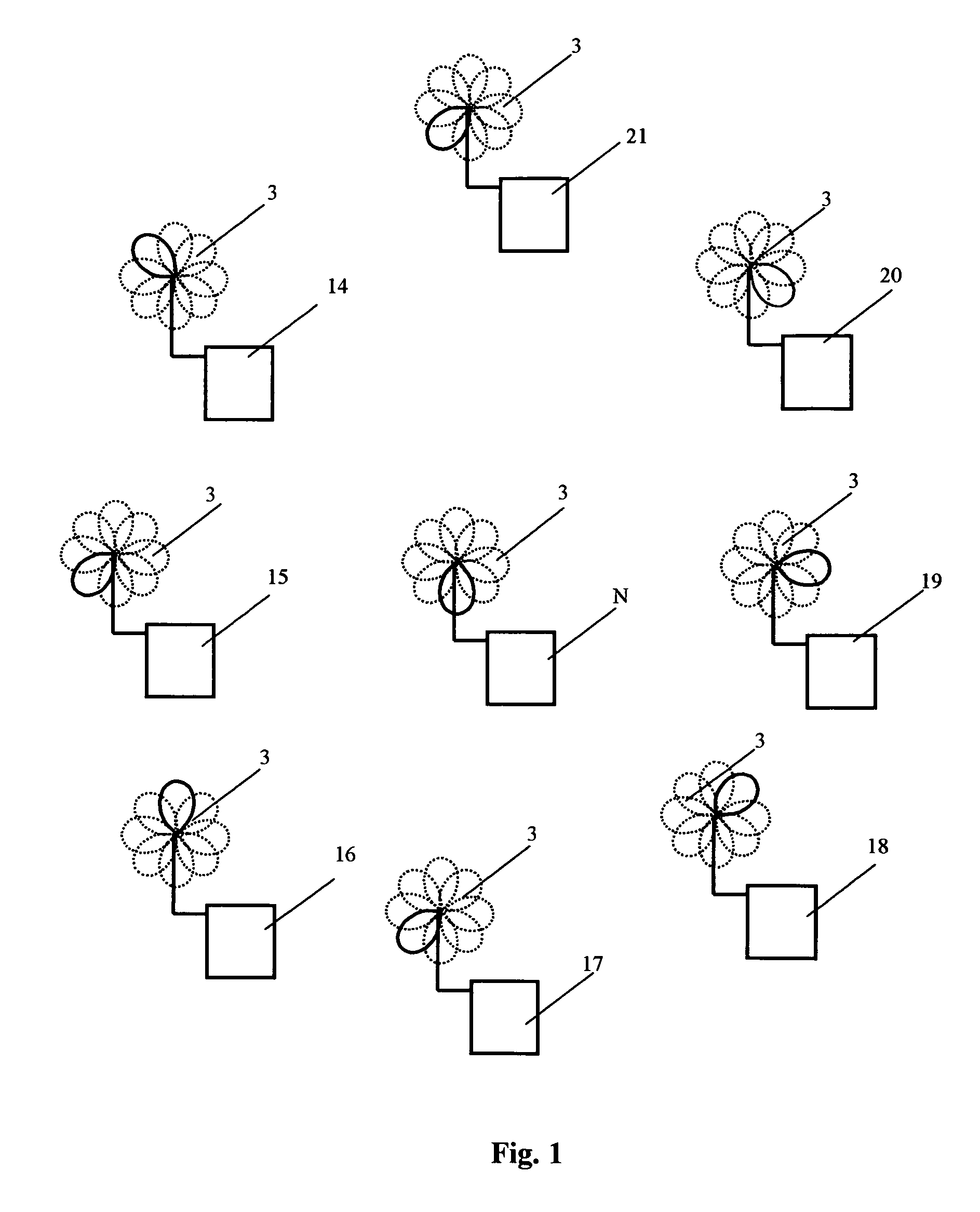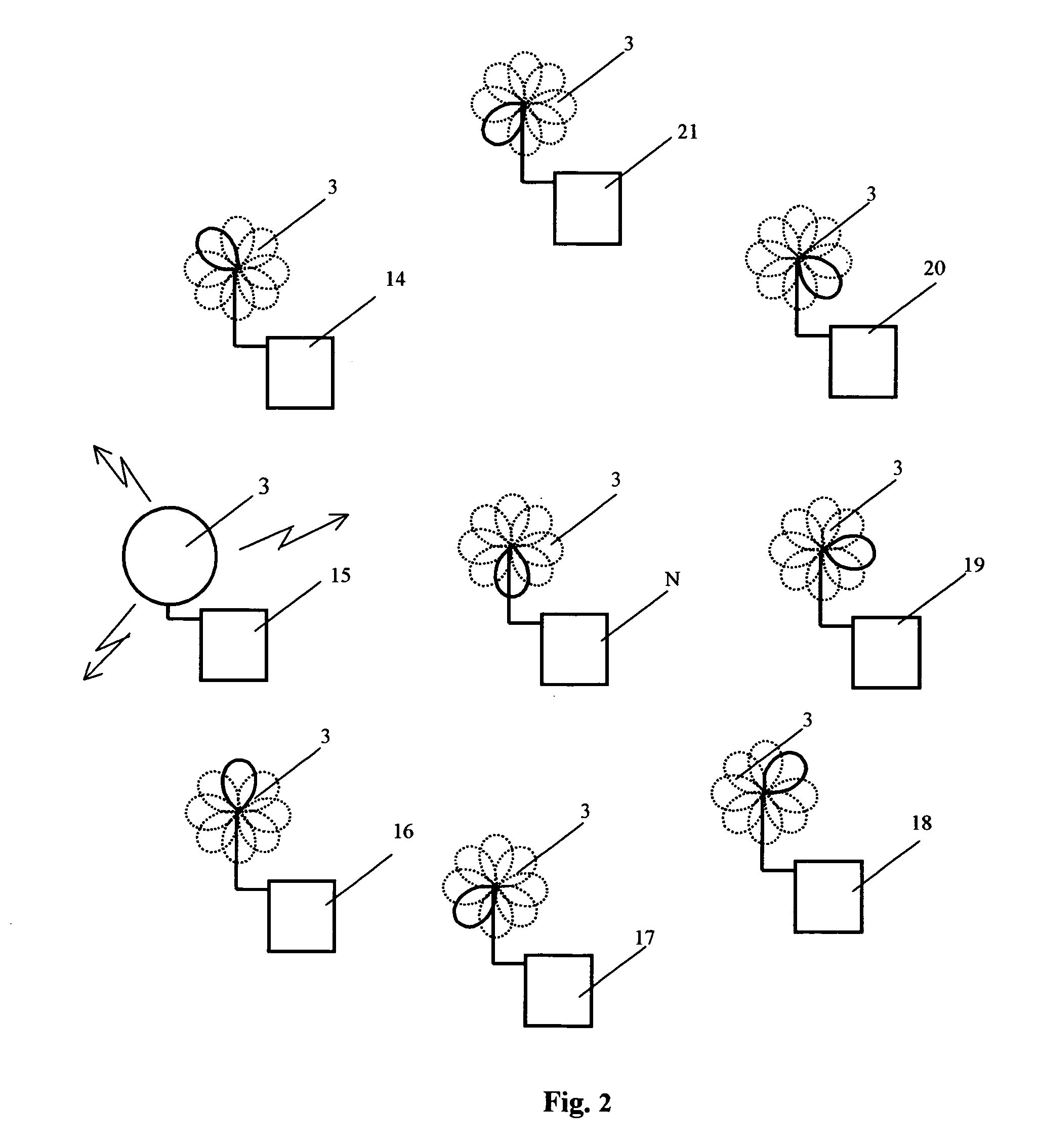Method for radio communication in a wireless local area network and transceiving device
a wireless local area network and radio communication technology, applied in the field of wireless local communication networks, can solve the problems of insufficient reliability of radio communication, parameter as a rule cannot be significantly improved for mobile wlan users powered from a self-powered device, and achieve the effects of improving communication quality and reliability, increasing wlan range, and increasing data transfer ra
- Summary
- Abstract
- Description
- Claims
- Application Information
AI Technical Summary
Benefits of technology
Problems solved by technology
Method used
Image
Examples
Embodiment Construction
[0051]The method for radio communication in a WLAN can be implemented using the transceiving device, which is shown in FIG. 8 and FIG. 9 in the transmission and reception modes correspondingly. The transceiving device 1 comprises antenna unit 2 consisting of at least one directional antenna 3 featuring a directional pattern controlled by means of a directional pattern switchover unit 4. In terms of design, antenna unit 2 can be made in different ways—namely, in the form of one antenna 3 with at least two radiators with directional patterns that, taken together, cover no less than 360° by azimuth bearing or by the angle of elevation; in the form of one antenna 3 with at least three radiators (for example, with four or six radiators) with directional patterns that, taken together, cover the hemisphere or sphere by the azimuth bearing and by the angle of elevation. Antenna unit 2 can be also made with at least two said antennas 3, with each antenna having at least one radiator, the dir...
PUM
 Login to View More
Login to View More Abstract
Description
Claims
Application Information
 Login to View More
Login to View More - R&D
- Intellectual Property
- Life Sciences
- Materials
- Tech Scout
- Unparalleled Data Quality
- Higher Quality Content
- 60% Fewer Hallucinations
Browse by: Latest US Patents, China's latest patents, Technical Efficacy Thesaurus, Application Domain, Technology Topic, Popular Technical Reports.
© 2025 PatSnap. All rights reserved.Legal|Privacy policy|Modern Slavery Act Transparency Statement|Sitemap|About US| Contact US: help@patsnap.com



